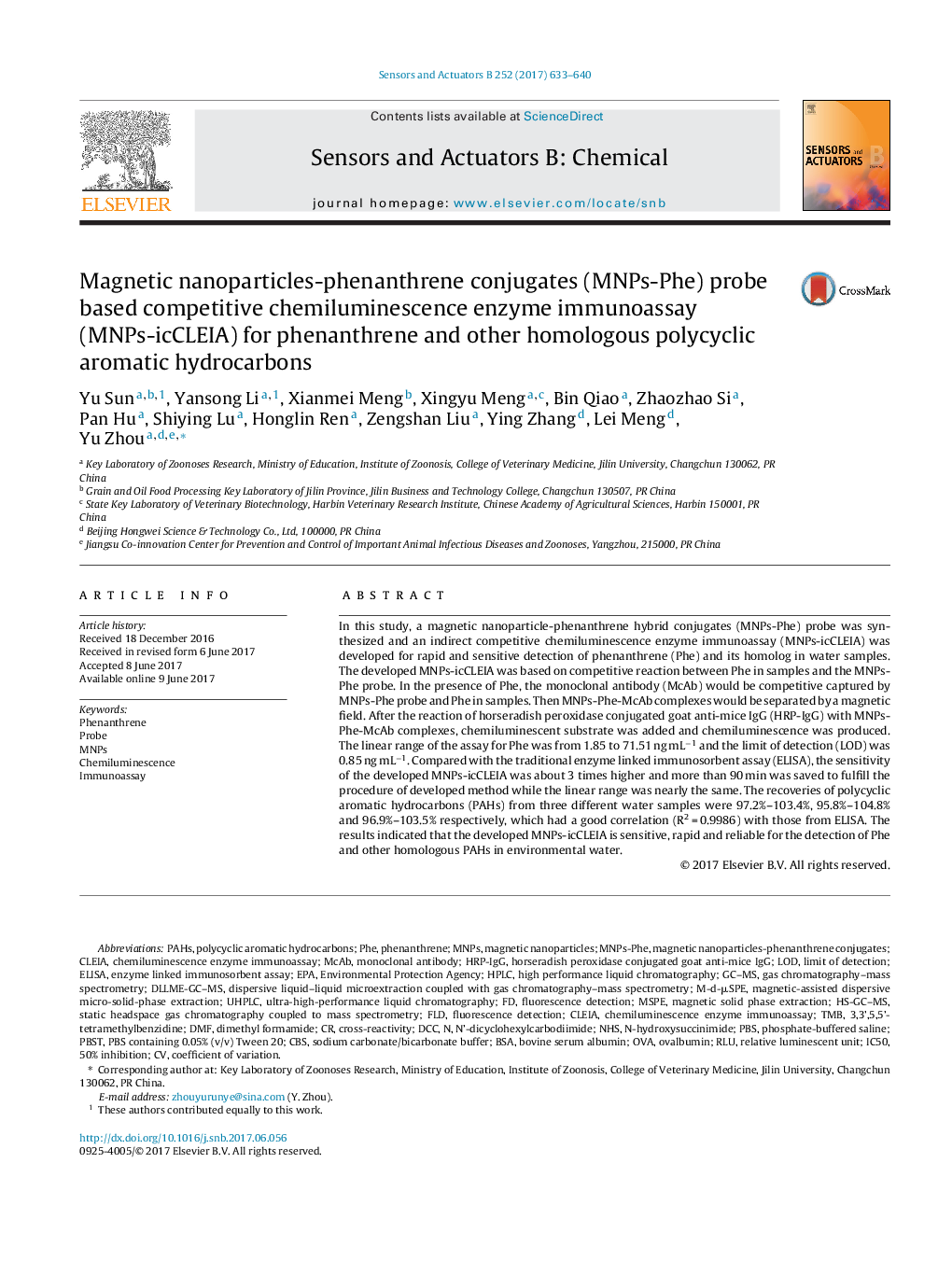| کد مقاله | کد نشریه | سال انتشار | مقاله انگلیسی | نسخه تمام متن |
|---|---|---|---|---|
| 5009114 | 1462039 | 2017 | 8 صفحه PDF | دانلود رایگان |

- A MNPs-Phe probe was synthesized.
- A MNPs-icCLEIA was developed for rapid and sensitive detection of PAHs.
- To fulfill the procedure of the assay, more than 90Â min was saved compared with the traditional ELISA.
In this study, a magnetic nanoparticle-phenanthrene hybrid conjugates (MNPs-Phe) probe was synthesized and an indirect competitive chemiluminescence enzyme immunoassay (MNPs-icCLEIA) was developed for rapid and sensitive detection of phenanthrene (Phe) and its homolog in water samples. The developed MNPs-icCLEIA was based on competitive reaction between Phe in samples and the MNPs-Phe probe. In the presence of Phe, the monoclonal antibody (McAb) would be competitive captured by MNPs-Phe probe and Phe in samples. Then MNPs-Phe-McAb complexes would be separated by a magnetic field. After the reaction of horseradish peroxidase conjugated goat anti-mice IgG (HRP-IgG) with MNPs-Phe-McAb complexes, chemiluminescent substrate was added and chemiluminescence was produced. The linear range of the assay for Phe was from 1.85 to 71.51 ng mLâ1 and the limit of detection (LOD) was 0.85 ng mLâ1. Compared with the traditional enzyme linked immunosorbent assay (ELISA), the sensitivity of the developed MNPs-icCLEIA was about 3 times higher and more than 90 min was saved to fulfill the procedure of developed method while the linear range was nearly the same. The recoveries of polycyclic aromatic hydrocarbons (PAHs) from three different water samples were 97.2%-103.4%, 95.8%-104.8% and 96.9%-103.5% respectively, which had a good correlation (R2 = 0.9986) with those from ELISA. The results indicated that the developed MNPs-icCLEIA is sensitive, rapid and reliable for the detection of Phe and other homologous PAHs in environmental water.
Journal: Sensors and Actuators B: Chemical - Volume 252, November 2017, Pages 633-640